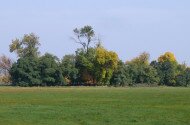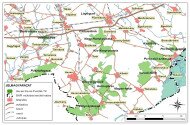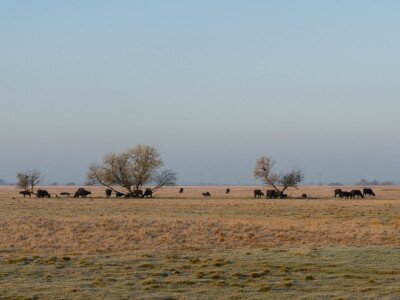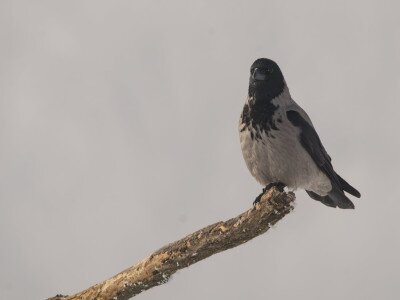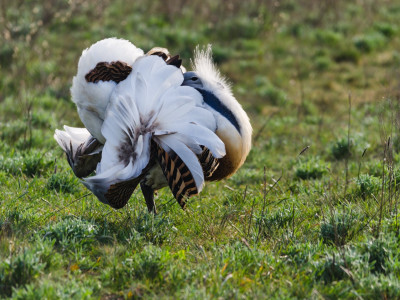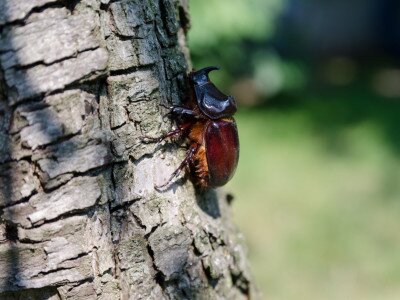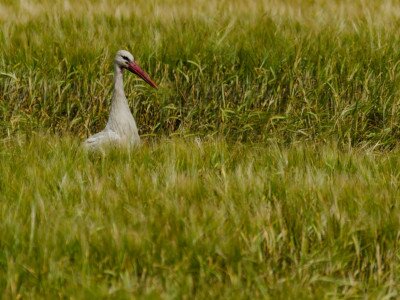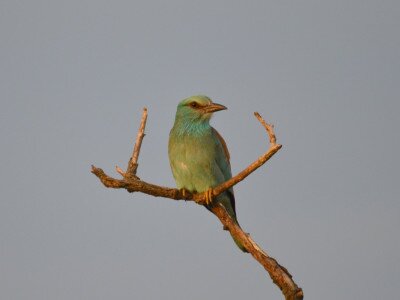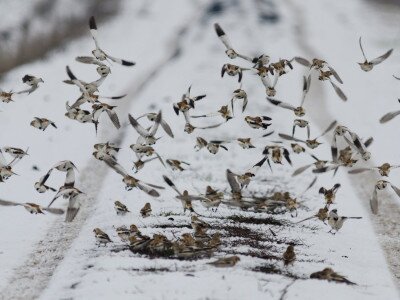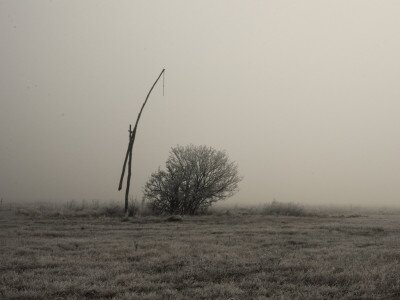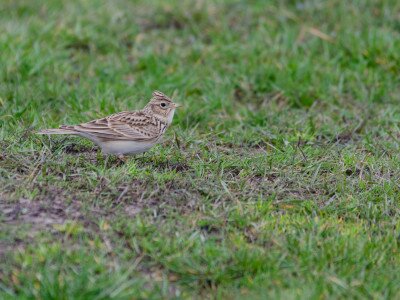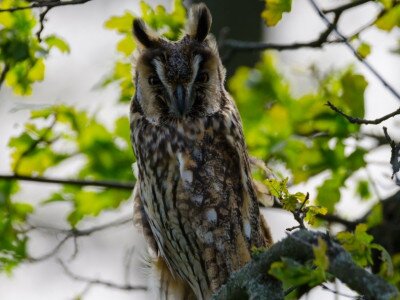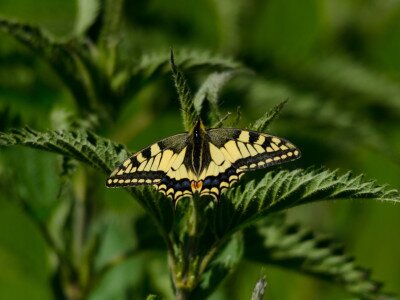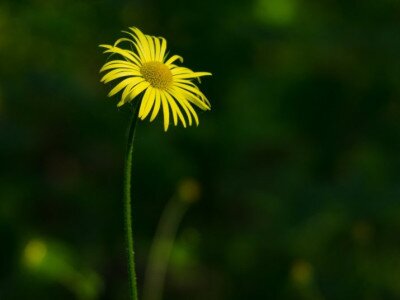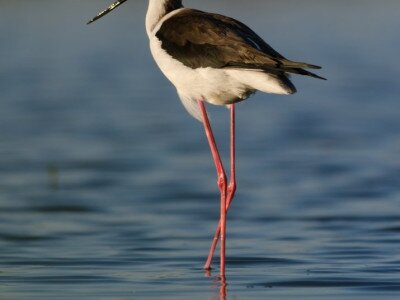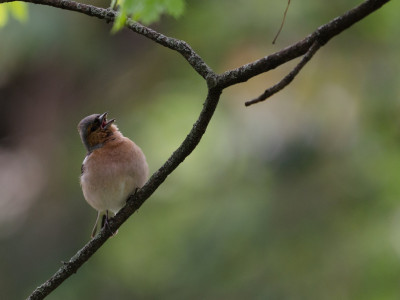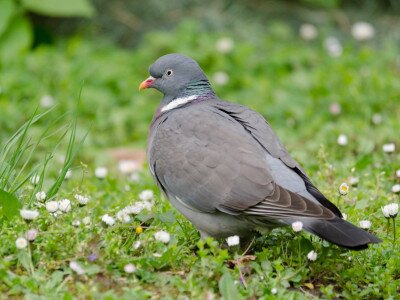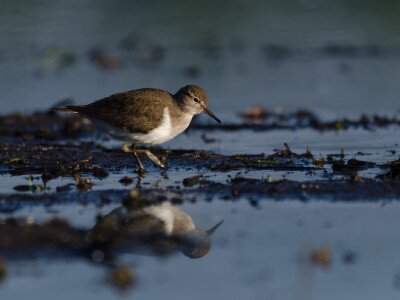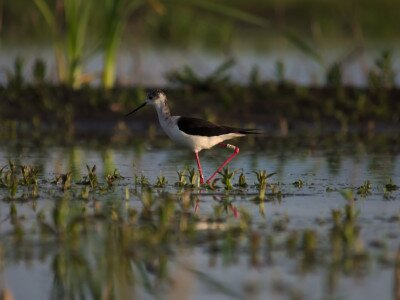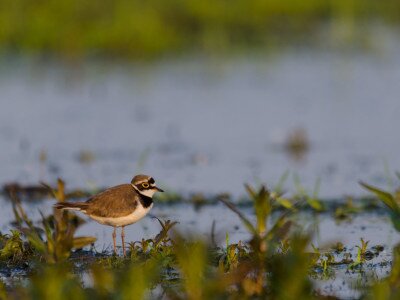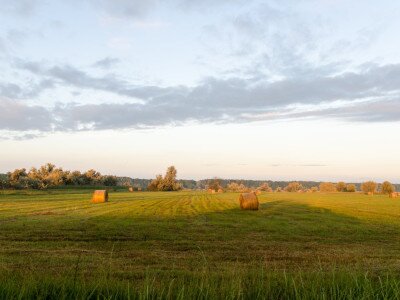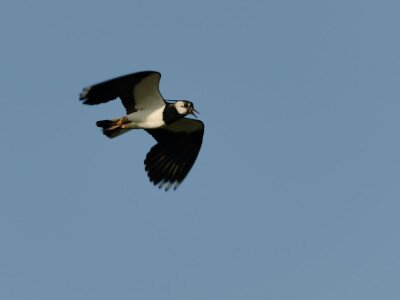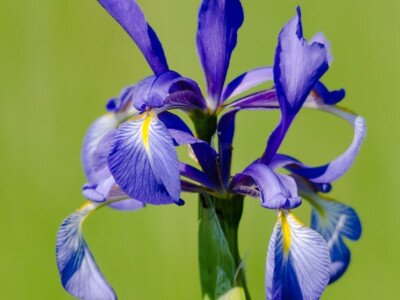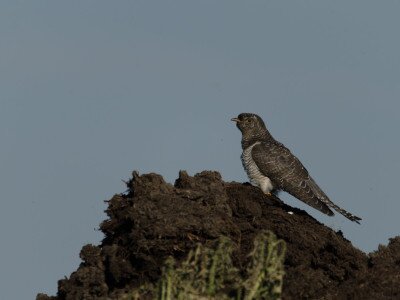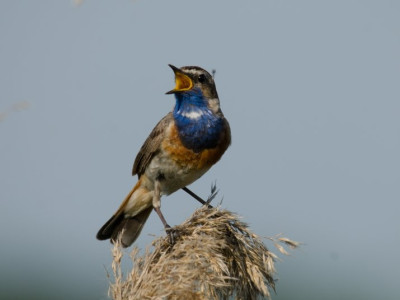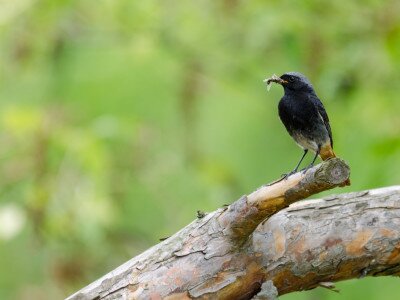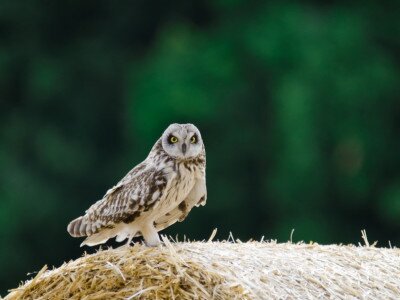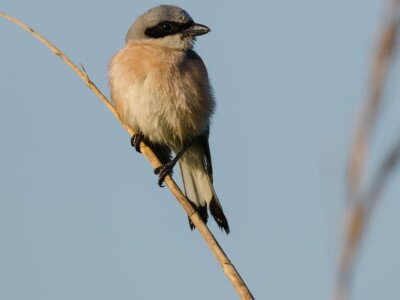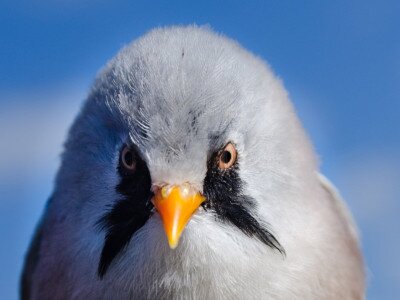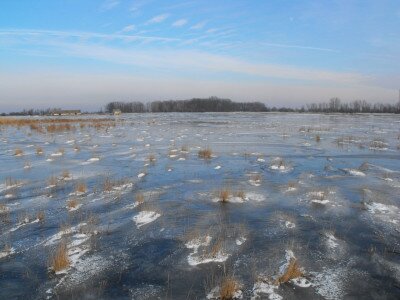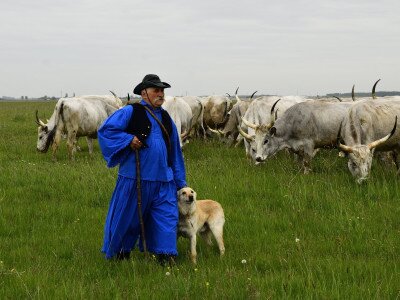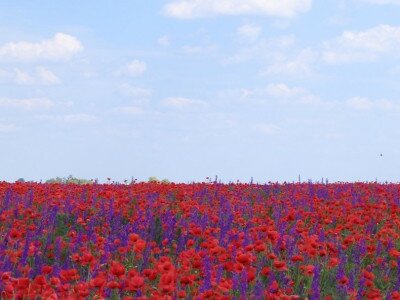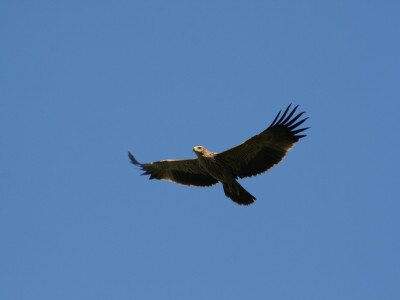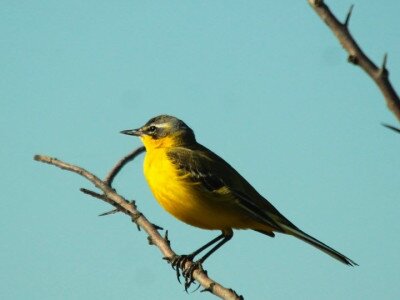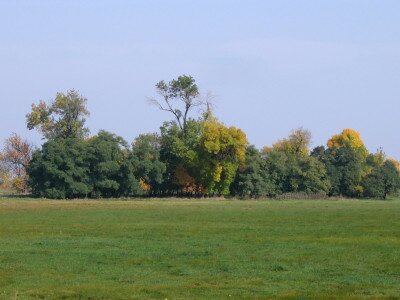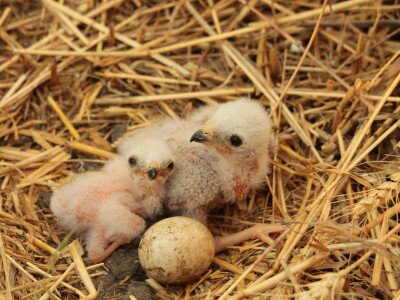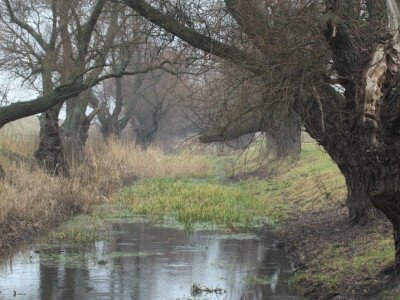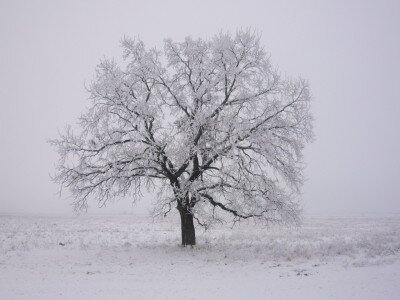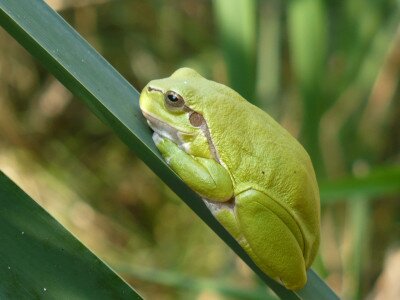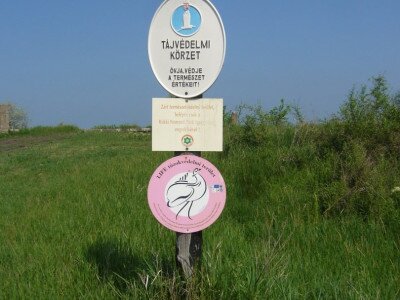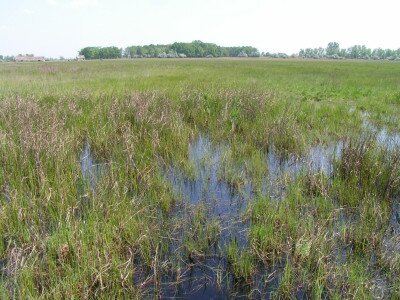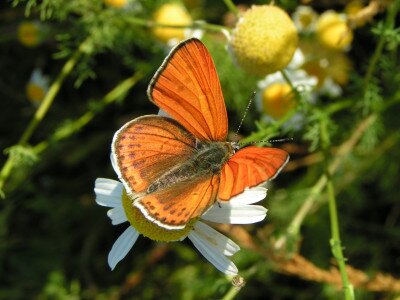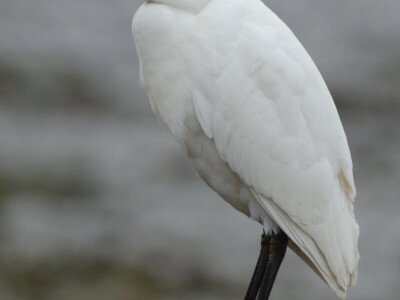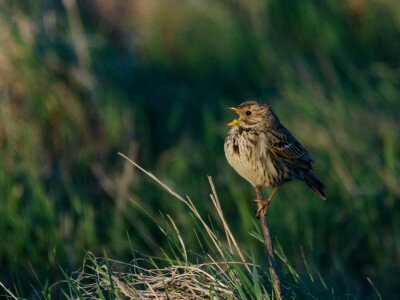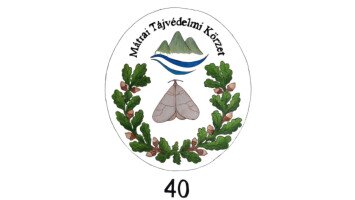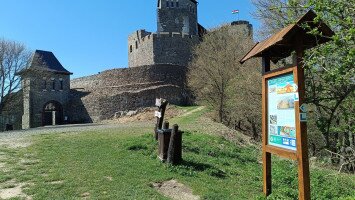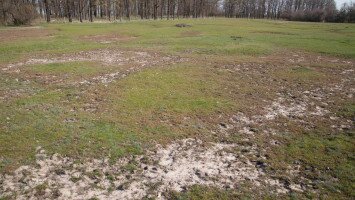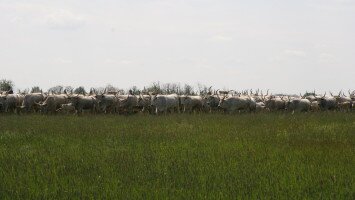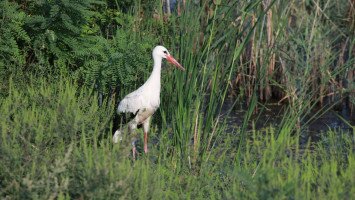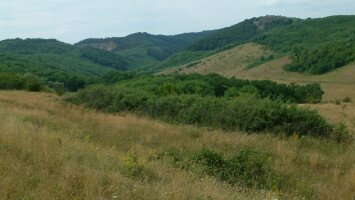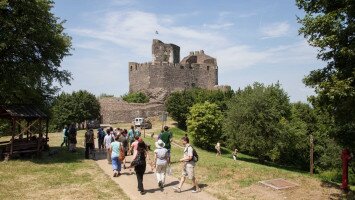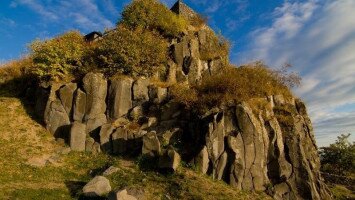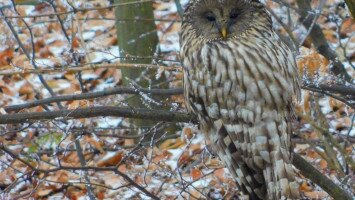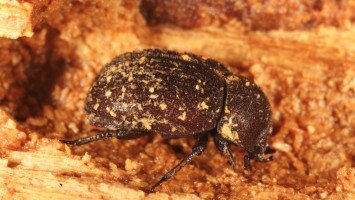
Hevesi Füves Puszták Tájvédelmi Körzet
Védetté nyilvánítás: 1993, területe: 16.114 ha
A Hevesi Füves Puszták Tájvédelmi Körzetet a Heves megye déli részén elhelyezkedő, ember által formált pusztai élőhelyek, illetve az itt élő életközösségek védelme érdekében 1993-ban nyilvánították védetté, s a 2005-ben és a 2008-ban történt bővítése után nyerte el jelenlegi kiterjedését, mely 16.114 hektár. A tájvédelmi körzet a dél-hevesi régió 23, valamint Jász-Nagykun-Szolnok megye egy települését érinti és 15 területegységből tevődik össze:
- Pélyi szikesek(Pély, Jászivány és Tarnaszentmiklós települések határában)
- Hamvajárás (Nagy-fertő, Gulya-gyep, Garabont területrészekkel)
- Nagy-Hanyi-puszta (Dormánd és Erdőtelek között)
- Kis-Hanyi-puszta (Átány, Erdőtelek és Besenyőtelek községek határában)
- Csörsz-árok (Dormánd és Erdőtelek közötti szakasza)
- Lógó-part (Kerecsend község határában)
- Magas-határ (Tiszanána község határában)
- Poroszlói-szikesek
- Sarudi-tömb
- Hevesi-gyepek (érintkezve a Hanyi-ér egy szakaszával)
- Pusztafogacs (Tarnaméra, Erk és Boconád községek határában)
- Kétútköz
- Poroszlói gyepek
- Göbölyjárás (Nagyút, Kompolt és Tarnazsadány községek határában)
- Bene-terasz (Nagyút község határában)
A térség földrajza
A Hevesi Füves Puszták Tájvédelmi Körzet a Hevesi-sík, a Gyöngyösi-sík és a Hevesi-ártér kistájakon fekszik: nagyobb része magas-ártéri jellegű, közepes vízállású hordalékkúp-síkságon, kisebb része ártéri szintű tökéletes síkságon terül el. Az Észak-alföldi-hordalékkúpsíkság és a Közép-Tisza-vidék felszínét a Tisza, valamint a Bükkből és a Mátra vidékéről érkező mellékfolyóinak (Tarna, Laskó, Eger-patak) építő-romboló munkája formálta, valamint az itt élő emberek földhasználati, tájművelési tevékenysége.
Az Észak-alföldi-hordalékkúpsíkság kistájai – a Gyöngyösi- és a Hevesi-sík – valójában a medenceperemi teraszos hordalékkúpsíkságok típusába tartoznak. Az észak-magyarországi-középhegységből kifutó vízfolyások a pleisztocén folyamán az Alföld északi sávjában építették ki hordalékkúpjaikat. A Gyöngyösi-síkon a Mátrából érkező vízfolyások (Ágói-patak, Gyöngyös, Bene-patak, Tarnóca) és a Tarna, míg a Hevesi-síkon az ős-Tarna, a Laskó és az Eger-patak akkumulálta hordalékát. A pleisztocén végén ezek a vízfolyások belevágódtak saját hordalékkúpjukba ártéri síksággá formálva környezetüket. A megmaradt hordalékkúp-felszíneket már a szél alakította tovább futóhomokformákat vagy löszös takarókat létrehozva.
Ezen medenceperemi (vagy hegylábperemi) hordalékkúp-síkságok domborzatában három alföldi tájtípus – a futóhomokos és a lösszel fedett hordalékkúp-síkságok, valamint az ártéri síkságok – vonásai ötvöződnek. A Gyöngyösi-sík Tarna-menti és Tarnától nyugatra eső részét az ártéri síkságokra jellemző holt medrek és morotvák tagolják. A Hevesi-homokhát az ős-Tarna kiemelt helyzetben megmaradt – lösszel fedett, illetve fedetlen futóhomokformákkal rendelkező – hordaléktakarója. A Hevesi-sík többi része alacsonyabb, alig tagolt löszfelszín.
A Hevesi-ártér a Közép-Tisza-vidék Taktaköztől Jászságig húzódó Közép-tiszai árterének része, melyet a pleisztocén végén az Ér völgyéből a Felső-Tisza-vidékre forduló Tisza oldalazó eróziója alakított ki. Ekkor megkezdte az addig a Berettyó vonaláig épülő hordaléktakaróba kanyarogva bevágódó Tisza a futóhomokos térszín letarolását. A Hevesi-ártér alacsony ártéri síkságának leggyakoribb domborzati formái a térségen áthaladó folyók irányváltozásait jelző elhagyott medrei és a morotvák.
A terület meleg, mérsékelten forró, száraz éghajlati körzetbe esik. Az ország legszárazabb tájai között találhatjuk meg. A csapadék évi összege a területen 450-
A Hevesi- és a Gyöngyösi-síkot nagyfokú vízszegénység jellemzi, miután a térségben csak néhány jelentősebb felszíni vízfolyás található. Ezek a Laskó-patak, a Hanyi-ér, a Bene-patak, a Tarna és a Tarnóca, amelyek napjainkban szinte teljes hosszukon gátak között, szabályozottan folynak, így a környezetükre csekély hatást gyakorolnak. Ezen vízfolyások mellett több kisebb csatorna található, amelyek a korábbi évek gyakorlata szerint inkább csak a vízelvezetést szolgálják. A mélyedésekben, illetve a régi holtágak helyén – a csapadék függvényében, leginkább tavasszal, nyár elején – kisebb-nagyobb időszakos vízállások jelenhetnek meg, melyek később, a nyári melegebb periódusban kiszáradnak.
A terület talajtani szempontból igen változatos, hiszen a fő talajtípusokból kilenc nagyobb, négy kisebb kiterjedésben fordul elő.A térség talajainak jelentős része (53%) szikes, vagy sóhatás alatt áll. Ezek nagy része (összesen 35%) szolonyeces réti talaj. A szikesedés a korábbi időszakban is jellemző volt a tájra, azonban az 1970-es években létrehozott Kiskörei-víztározó hatására a pangó talajvíz szintje megemelkedett, amely elősegítette e folyamatot.
A térség mintegy 60%-a szántóföldi művelés alatt áll, a gyepterületek aránya mindössze 12%. Sajnos az erdőterületek szinte teljesen eltűntek, alig maradt néhány 10 ha-nál nagyobb tömb a régió szétszórt pontjain, melyek kivétel nélkül telepített erdők. A védett terület legnagyobb részét a gyepek (47 %) és a szántók (46 %) teszik ki. Közel 5 % a művelésből kivont területek, alig több mint 1 % az erdők és fásítások aránya.
Társadalmi jellemzők, gazdálkodás
A térségre a falvas településszerkezet jellemző. Az elmúlt évtizedekben a tanyák felszámolódtak, a megmaradtak többnyire állattartó telepként funkcionálnak. A lakosság a hátrányos gazdasági helyzet miatt elvándorol, ily módon a települések többségén az elöregedés jelei mutatkoznak. A munkanélküliség aránya országos viszonylatban rendkívül magas. A nehéz körülmények között élő lakosság a természeti értékekre jelentős negatív hatást fejt ki: ilyen a gondatlanságból nem megfelelő helyeken történő hulladék elhelyezés, a téli tüzelő illegális gyűjtése védett területen. Gondot okoz a kamilla, a csiga, a gomba gyűjtése, illetve a tarlók, gyepek égetése. A kisparcellás táblaszerkezet miatt a területen nagy a mozgás, így a zavartalanság nem biztosítható a kellő mértékben. A szemléletformálás hatására azonban látható ma már egy pozitív változás is. Egyre többen igénylik az egészséges természeti környezetet, illetve felismerik, értékelik a térség természeti kincseit. Ennek következményeként ma már a területen dolgozó mezőgazdasági munkások, vadőrök, mezőőrök egyre gyakrabban keresik a természetvédelmi szakembereket azért, hogy közösen találjanak megoldást egy-egy problémára. A földhasználók és a természetvédelem kapcsolatában mérföldkőnek tekinthető a 2002-ben elindított agrár-környezetvédelmi program (napjainkban Magas Természeti Értékű Területek /MTÉT/ programja), mely érdekeltté tette a térségben gazdálkodókat abban, hogy gazdálkodásukat a természeti értékek megóvásának igényéhez igazítva, azt szem előtt tartva folytassák.
A régió hazánk gazdaságilag elmaradottabb vidékei közé tartozik. Miközben a falvak lakossága rohamosan csökken, csak a Tisza-tó környezetében az állandó lakosság helyett a térségbe üdülni járók létszáma emelkedik. A térségben komolyabb ipari létesítmények nem találhatók, a helyi lakosság megélhetésének forrása elsősorban a mezőgazdaság, illetve – különösen a Tisza-tó körül – egyre jelentősebb mértékben a turizmus és a vendégforgalom.A kedvezőtlen adottságoknak köszönhetően a mezőgazdálkodás félintenzív jellegű: a hagyományos, alacsony ráfordítás igényű növénykultúrák termesztése jellemző, az intenzív termesztést igénylő haszonnövények aránya átlagosan 25% alatti. A vetésszerkezetre jellemző a kalászosok (főleg őszi búza és őszi árpa) magas aránya, valamint a repce és napraforgó termesztése. Az állatállomány csökkenésével átmenetileg a lucerna területaránya is csökkent, de az egyre népszerűbb MTÉT-célprogramok igénylése folytán napjainkra ismét jelentős területeken termesztik. A gyepeket elsősorban tereltetéses legeltetéssel hasznosítják, amihez hozzájárul az MTÉT szabályozás is, amely ezt a használati módot részesíti előnyben. A nagyobb állattartó telepek egy-két kivétellel megszűntek, így a még fennmaradt gyepterületek részben kezelés nélkül maradtak, azokon kedvezőtlen szukcessziós folyamatok indultak el.
Növényvilág
A térség növényföldrajzi értelemben a Tiszántúli flórajárás (Crisicum) részét képezi. Mindemellett a növényzet fajösszetételén északon a dombvidéki, hegylábi területek, délen pedig a Tisza növényzetformáló hatása hangsúlyosabban jelentkezik, így egyfajta átmeneti jellege is kiemelhető a kistájnak.
Az alföldi kultúrtájjá alakított területek növénytani kutatása messze elmaradt a tudósokat jobban vonzó hegy- és dombvidéki területekétől. Mára a több ütemben megvalósult tájvédelmi körzet bővítését megalapozó botanikai feltárás révén alapos képet kaphatunk a terület flórájáról és növényzetéről. A területen több, mint 1000 növényfaj fordul elő, mely jelentősnek mondható, összehasonlításul a Tisza bal partján elterülő Hortobágyi Nemzeti Park növényvilágával, amelynek a tágabb környezetből 951 növényfajt mutattak ki.
A jelentős természetátalakító beavatkozások miatt (homoki tölgyesek kiirtása, mocsarak, löszpuszták feltörése) igen magas azon védett növényfajok száma, melyeket kipusztultnak kell tekintenünk a térségből: pl. tátorján (Crambe tatarica), szártalan és érdes csüdfű (Astragalus exscapus, A. asper), sömörös kosbor (Orchis ustulata).
A legmarkánsabb növényzeti típust a szikesek adják, melyek kialakulásában és fennmaradásában nagy szerepet játszottak az emberi hatások, ugyanakkor ősi szikes mozaikokat is feltételezünk a terület déli részén. A szikesek a változatos mikrodomborzatnak megfelelően mozaikos élőhelyeket alkotnak. A mozaikosság a vízborítás időtartamától, valamint a talaj szikesedésének és eróziójának a mértékétől függ. Az ezt legjobban reprezentáló padkás szikesek legszebb képviselői a pélyi szikeseken a Hosszú- és Ludas-fertőben, a jásziványi Templom-dűlőben, illetve a Sarudi-tömbben találhatók. A szikes laposok („fertők”) zsiókás, sziki harmatkásás, hernyópázsitos mocsaraiban és rétjein él a pannon bennszülött kisfészkű aszat (Cirsium brachycephalum), a sziki here (Trifolium angulatum) és a sziki boglárka (Ranunculus lateriflorus). A mocsarakat a szikerek kanyargós hálózata veszi körül, melyben dominánsak az egyéves fajok, úgymint a kígyófarkfű (Pholiorus pannonicus), a vékony útifű (Plantago tenuiflora) és az egérfarkfű (Myosurus minimus). Legkiterjedtebbek a cickórós (Achilleo-Festucetum pseudovinae) és az ürmös sziki gyepek (Artemisio-Festucetum pseudovinae), melyeket hagyományosan legeltetéssel hasznosítanak. A csapadékosabb években a belvizes szántók peremén, mocsarak szegélyében megjelentek a törpekákás iszapnövényzet (Eleochari aciculari-Schoenoplectetum supini) képviselői is, úgymint a heverő iszapfű (Lindernia procumbens), a pocsolyalátonya (Elatine alsinastrum), a magyar látonya (Elatine hungarica) és az iszaprojt (Limosella aquatica). Vegetációtörténeti szempontból érdemes még kiemelni egy szikesekhez köthető – de löszfajokban is gazdag – értékes növénytársulást: a sziki erdőspuszta-rétet (Peucedano-Asteretum sedifolii), melynek legértékesebb állományai a dormándi Nagy-Hanyiban találhatók. Jellemző védett fajai a fátyolos nőszirom (Iris spuria), a sziki kocsord (Peucedanum officinalis) és a réti őszirózsa. (Aster sedifolius).
A löszgyepeket jórészt már a neolitikumtól kezdve feltörték és hasznosították. Maradványaik főleg határmezsgyéken, sáncokon, illetve a szikesekből kiemelkedő löszös hátakon találhatók meg. A tájvédelmi körzet értékes löszfajai közül érdemes kiemelni a macskaherét (Phlomis tuberosa), a változó gurgolyát (Seseli varium), a hibrid gyújtoványfüvet (Linaria kocianovichii) és a hengeresfészkű peremizst (Inula germanica). Hegylábperemi löszgyepeken dombvidéki elemek is fennmaradtak, mint például a Janka-tarsóka (Thlaspi jankae), a piros kígyószisz (Echium russicum) és az epergyöngyike (Muscari botryoides). A szintén védett Kerecsendi-erdőhöz („Fácános-berek”) illeszkedő Lógó-parton a hegylábperem sztyepp- és erdőssztyepp fajokban gazdag „virágoskertje” található meg, olyan alföldi kuriózumokkal, mint leánykökörcsin (Pulsatilla grandis), bugás veronika (Veronica spuria) és keskenylevelű árvalányhaj (Stipa tirsa). A löszpusztákkal szemben a homoki vegetáció szinte teljesen felszámolódott, azonban Kitaibel Pál útleírásaiból (XIX. sz. eleje) ismertté vált Hevesi-erdő az egyik legértékesebb homoki erdőssztyepp erdőnk lehetett. Ma itt szántóföldek, jellegtelen akácosok és gyümölcsösök tenyésznek.
A térség telepített tölgyeseire (pl. pélyi Makkos-erdő, besenyőtelki Rátkai-erdő) jellemző egyes dombvidéki fajok betelepülése, melyek közül különösen a páfrányfélék /pl. szálkás- és erdei pajzsika (Dryopteris carthusiana, D. dilix-mas)/ és orchideák /pl. fehér és kardos madársisak (Cephalanthera damasonium, C. longifolia), széleslevelű és Tallós-nőszőfű (Epipactis helleborine, E. tallosii)/ együttes megjelenése érdekes.
A térség erdősültsége nagyon alacsony, 1 % körüli. Tájképileg a szántóföldek és a megmaradt gyepek mentén található szórvány fasorok, magányos fák a jellemzőek. Ezek nagy részben tájidegen fajokból állnak, mint a keskenylevelű ezüstfa (Eleagnus angustifolia), fehér akác (Robinia pseudoacacia), valamint a szövetkezeti időkből ránk maradt különböző nemesnyár klónok. Ezek a fasorok nagyon jól illeszkednek a szántók és gyepek alkotta mozaikos elrendeződésbe. Annak ellenére, hogy természetvédelmi szempontból megkérdőjelezhető e fafajok létjogosultsága hazánkban, a térségre jellemző szélsőséges időjárási körülményekhez, szikes talajokhoz és ezek rendkívül ingadozó vízháztartásához nagyon jól alkalmazkodtak és kiváló fészkelési lehetőséget nyújtanak a Hevesi-sík gazdag madárvilágának, különösképpen a védett és fokozottan védett ragadozó madaraknak, valamint a szalakótának. A régió hazánk gazdaságilag elmaradottabb vidékei közé tartozik, ami maga után vonja a folyamatos illegális fakitermeléseket. Számos fasor, erdőfolt gyérült meg, vagy tűnt el teljesen, ami a fás növényzethez köthető fajok visszaszorulásához vezetett. A fasorok kiöregedésének (ez elsősorban a nyarasokat érinti), másrészt a folyamatos illegális, fakitermeléseknek köszönhetően a nemzeti park igazgatósági vagyonkezelésben lévő földterületeken megkezdődtek a fafajcserés átalakítások és felújítások. Hazai fajokkal próbáljuk pótolni és szükség esetén, új területeken fásítások létrehozásával kiegészíteni az eltünedező fasorokat, kisebb erdőfoltokat. Egyre nagyobb problémát jelent azonban a kisebb-nagyobb vízfolyások (Tisza, Laskó, Hanyi) mentén agresszívan terjeszkedő és a csatornák, utak mezsgyéjén már egyre gyakrabban megtalálható bálványfa is.
A régióban mindösszesen néhány helyen találni foltszerűen, a világháborút követő évtizedekben telepített, egy tömbben elhelyezkedő erdőfoltokat. Ilyen többek között a pélyi Makkos erdő, a mezőszemerei Prónai-erdő, vagy a besenyőtelki Disznós-kert és Rátkai-erdő. Ezekhez többnyire hazai fajokat használtak, így kocsányos tölgy, fehér nyár, magyar kőris és vadkörte alkotja főleg ezeket az állományokat. Ezek megőrzése fontos természetvédelmi feladat, mert botanikailag és zoológiailag is nagyon értékes fajok kötődhetnek hozzájuk.
Egyes vizesebb termőhelyeken, mint a Tisza mente, Erk – Tarnaörs környezetében, de elszórtan a tájegységben több helyen találkozhatunk kisebb-nagyobb nemes nyár ültetvényekkel. Ezek rendeltetése elsősorban faanyagtermelés, azonban ha védett területen található, akkor fakitermelést követően hazai fajokkal való felújítási kötelezettség keletkezik.
Állatvilág
A Hevesi-sík természeti értékei sokáig csak töredékesen voltak ismertek. A Tájvédelmi Körzet létrejöttét követő módszeres felmérések és kutatások tették lehetővé a rendkívül változatos élővilág feltárását. A zoológiai kutatások hamar arra a következtetésre vezettek, hogy a térség „kultúrtáj” jellege ellenére, vagy éppen amiatt, a változatos élőhelyek sokasága és azok egyedi, térségre jellemző mintázata sokszínű, fajgazdag állatvilág létét biztosítja.
Gerinctelen fauna
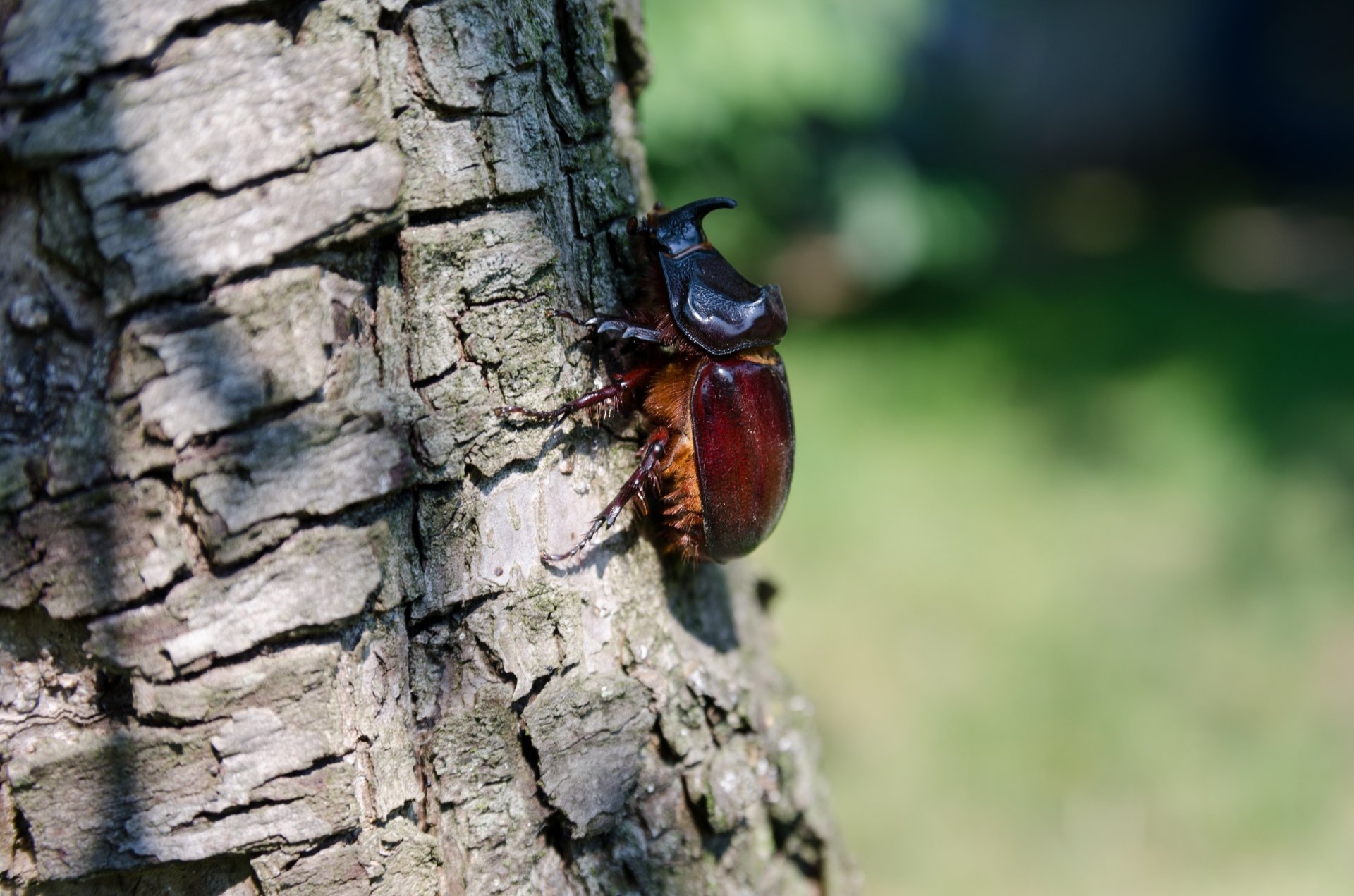
A gerinctelen fauna kutatása az elmúlt másfél évtizedben vált intenzívvé a tájvédelmi körzet alapállapot-felmérése, majd a különböző adatgyűjtést célzó és monitoring jellegű vizsgálatok során. Mára elég jól ismert a terület a lepkék, futóbogarak, egyenesszárnyúak és pókok előfordulását illetően. Annak ellenére, hogy a térség elsősorban mezőgazdasági jellegű, a mozaikosan megmaradt természetközeli élőhelyek, különösen a gyepfragmentumok számos ritka, védett gerinctelen faj élőhelyeit jelentik.
A nagylepkék közül eddig 383fajt sikerült kimutatni a területről, ez a hazai fajok több mint 30 %-át jelenti, ebből 49 nappali és 334 éjjeli lepke. Ezek közül több természetvédelmi szempontból jelentős, 3 faj fokozottan védett, 30 faj védett, 23 faj pedig faunisztikai érdekességnek nevezhető. A fokozottan védett fajok közül a csertölgyön élő magyar tavaszi fésűsbagoly (Dioszeghyana schmidtii) néhány nagyobb erdőfoltból ismert.A sziki kocsordon élő nagy szikibagoly (Gortyna borelii lunata) több gyepfragmentumból is előkerült, míg a sziki ürmön fejlődő sztyeplepkét (Catopta thrips), eddig csupán egyetlen löszgyepből sikerült kimutatni. Mindenképp említésre méltó, védett éjjeli lepkefajok még a magaskórós növényzethez kötődő törpeszender (Proserpinus prosrpina), és a búzavirágos-pipacsos-szarkalábas táblaszegélyekhez kötődő szarkaláb-bagoly (Periphanes delphinii). A nappali lepkék közül számos védett faj megtalálható a területen, így az erdőfoltok aljnövényzetében keltike-fajokon fejlődő kis-apollólepke (Parnassius mnemosyne), a csatornaparti és útmenti farkasalmás szegélyekhez kötődő farkasalmalepke (Zerynthia polyxena) és a lóromos mocsárréteken élő nagy tűzlepke (Lycaena dispar rutilus). Ez utóbbinak rokona a félszáraz gyepekre jellemző ibolyás tűzlepke (Lycaena alciphron) és a sztyep élőhelyekhez kötődő kis tűzlepke (Lycaena thersamon). A terjedőben lévő, Viola-fajokon élő ritka zöldes gyöngyházlepke (Argynnis pandora) pedig az utóbbi években a Hanyi-parton is megjelent. Az éjjeli lepkék közül előkerült néhány faunisztikai érdekesség is. Ezek közül a legjelentősebb a vándor kertibagoly (Lacanobia blenna) és a zömök sárgafűbagoly (Noctua interjecta) egy-egy adata. E vándorlásra hajlamos fajok hazánkban nagyon ritkák, csupán egy-két lelőhelyről ismertek. A sziki szegfűbagoly (Hadula dianthi hungarica) endemikus alfajunk, lokális, erősen kötődik a szikesekhez.
A futóbogarak közül eddig több mint 212fajt mutattak ki a térségben, ez a hazai fajok 40 %-át jelenti. Külön érdekesség, hogy a területről 2005-ben előkerült egy Magyarország faunájára új faj, a Dyschirius benedikti is. A nagytestű Carabus fajok közül a szikes mocsarakban szinte mindenhol előfordul a ritka, védett szárnyas futrinka (Carabus clathratus), szárazabb élőhelyeken pedig a mezei futrinka (Carabus granulatus) és az aranypettyes bábrabló (Calosoma auropunctatum) példányaival találkozhatunk. A kisebb testű Carabidae-fajok közül is számos ritka, a szikesekhez kötődő faj megtalálható (Brachinus bipustulatus, Brachinus nigricornis, Harpalus attenuatus, Microlestes negrita, Notiophilus laticollis, Poecilus puncticollis, Pterostichus aterrimus, Pterostichus chameleon, Pterostichus inquinatus). Ezek közül talán a legritkább a Magyarországon eddig mindössze két helyről ismert Microlestes negrita. Így a Hevesi-síkon található a faj harmadik bizonyított hazai előfordulása.
A futóbogarakon kívül a lemezescsápú bogarak között is akadnak olyan ritkaságok, melyek a területen nagy egyedszámban fordulnak elő. Ilyen a védett magyar virágbogár (Potosia ungarica), melynek csak a Kerecsendi-erdőből volt ismert adata, célzott kereséssel a fajt több mint 20 új lokalitásból sikerült kimutatni. A kevésbé kötött talajú gyepek bogáncsos szegélyeihez kötődik, ahol nem a növény virágán, hanem annak szárán táplálkozik, a levélhüvelyek tövénél szívogatva. Rokona, a szintén védett pompás virágbogár (Potosia aeruginosa), mellyel csak az erdőfoltok környékén találkozhatunk, nem látogat virágokat, a fák nedveit szívogatja. Mivel a lombkoronában repül, így ritkán kerül szem elé, kevés adata ismert. További védett bogárfaj a ritka holdszarvú ganéjtúró (Copris lunaris), mely a legeltetéssel kezelt gyepekben néhol még megtalálható, de egyedszáma alacsony.
Az egyenesszárnyúak közül karakterfajnak számít a szemölcsevő szöcske (Decticus verrucivorus), de érdemes megemlíteni a ritka, pusztai élőhelyekhez kötődő sisakos sáskát (Acrida hungarica) is. Itt érdemes megemlíteni a térségben ma még gyakori, védett imádkozó sáskát (Mantis religiosa) is.
A pókfauna tipikus, az alföldi szikesekre jellemző. A szikes mocsarakban élő ritka, védett fajok a parti vidrapók (Dolomedes plantarius) és a búvárpók (Argyroneta aquatica). A talajlakó fajok közül mindenképp meg kell említeni a szintén védett szongáriai cselőpókot (Lycosa singoriensis), hazai legnagyobb testű pókfajunkat. A nappali időszakban a farkaspókok, mint a pusztai farkaspók (Pardosa agrestis), éjjel pedig a kövipókok vadásznak, fogóháló nélkül. Számos unikális érték képviselteti magát a területen, mint például a mészpókok közé tartozó Titanoeca veteranica, vagy a kövipókok közé tartozó Micaria rossica.
Gerinces fauna
A zoológiai értékek között a gerinces fauna a leginkább kutatott, ennek megfelelően leginkább feltárt csoport.
A halakat elsősorban a nagyobb vízfolyásokban vizsgálták. Viszonylag gazdag a terület halfaunája, például a Hanyi-érből 22 fajt sikerült kimutatni. Külön említést a területen stabil állománnyal bíró, természetvédelmi oltalom alatt álló fajok érdemelnek, mint a kurta baing (Leucaspius delineatus), a szivárványos ökle (Rhodeus sericeus) és a vágó csík (Cobitis taenia).
A kétéltűek igen nagy egyedszámban képviseltetik magukat a számukra alkalmas élőhelyeken. Egy csapadékosabb időszakban egy-egy este akár több ezer béka hangját is lehet hallani néhány nagyobb vízállás mellett. A leggyakrabban előforduló fajok a vöröshasú unka (Bombina bombina), a zöld levelibéka (Hyla arborea), a barna ásóbéka (Pelobates fuscus) és a zöld varangy (Bufo viridis), de kora tavasszal a mocsári béka (Rana arvalis) néhány példánya is előkerülhet egyes helyeken. A vizes élőhelyek vizsgálata során élve fogó csapdákkal sikerült kimutatni a pettyes gőte (Triturus vulgaris) és a dunai tarajos gőte (Triturus dobrogicus) jelenlétét.
A hüllőfajok tekintetében a terület rendkívül szegény. Mindössze a mocsári teknős (Emys orbicularis) és a vízi sikló (Natrix natrix) fordul elő a vizes területek közelében, valamint a fürge gyík (Lacerta agilis) a száraz gyepeken.
A több, mint két évtizedes gerinces-zoológiai kutatások eredményeként megállapítható, hogy a Hevesi-sík természeti értékleltárának legjelentősebb részét a térség rendkívül gazdag és sajátos összetételű madárvilága képezi. A tájvédelmi körzet megalakulását megelőző időszaktól kezdve napjainkig folyamatos felmérések és vizsgálatok tárgyát képezi e fajcsoport, így átfogó és naprakész információkkal rendelkezünk az egyes fajok státuszáról, állományviszonyaik alakulásáról. Különösen igaz ez a ritkább, kiemelt természetvédelmi jelentőséggel bíró fajok esetében, de a tájra jellemző madárközösség gyakoribbnak mondható karakterfajai is rendszeresen felmérésre kerülnek.
A hazánkban ez idáig bizonyítottan előfordult több mint 400 madárfaj közül a térségben 263 fajt sikerült kimutatni. Ez a fajgazdagság együttesen köszönhető a tájra jellemző élőhelyek változatosságának, valamint a szomszédos régiók eltérő földrajzi-élőhelyi adottságainak. A Hevesi-síkot övező hegylábak, azokról a térségbe lefutó folyóvizek, valamint a Tisza, mint fontos vonulási útvonalak közelsége együttesen járulnak hozzá e változatos madárvilág kialakulásához.
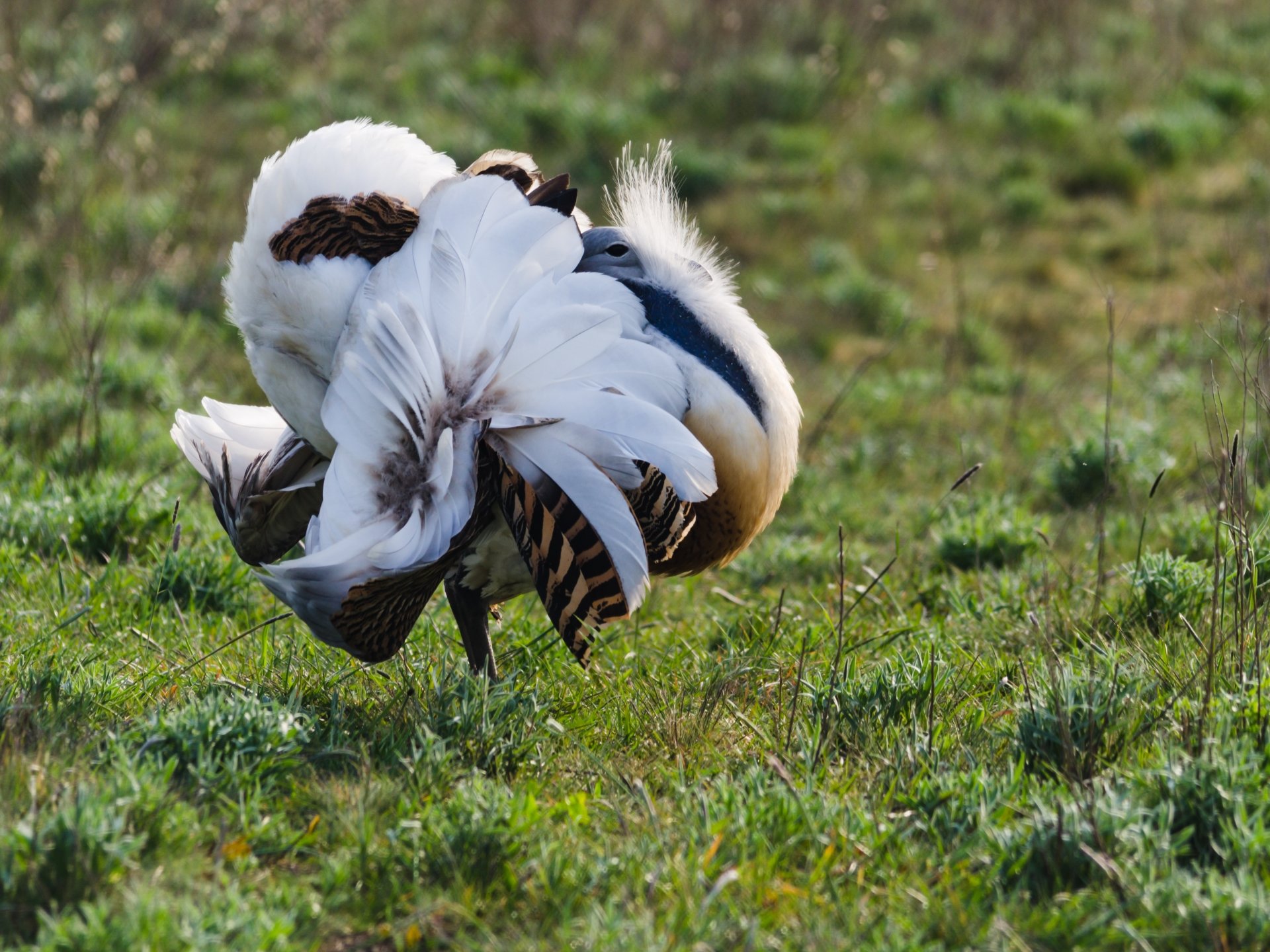
A térség legjelentősebbnek tekintett madártani értékét a globálisan veszélyeztetett túzok (Otis tarda), valamint a ritka, fokozottan védett ragadozómadár-fajok, úgymint a parlagi sas (Aquila heliaca), kerecsen sólyom (Falco cherrug), kék vércse (Falco vespertinus) és hamvas rétihéja (Circus pygargus) állományai jelentik. Mindezen fajok védelmét sokrétű faj-és élőhelyvédelmi programok szolgálják, minek eredményeképp fészkelő állományaik a legtöbb faj esetében országos viszonylatban is jelentőssé váltak. Szintén fokozott figyelmet érdemel a térség szalakóta (Coracias garrulus) állománya, melynek térségi állománya meghaladja az országos állomány 20%-át, valamint a mezőgazdasági környezetben költő, fokozottan védett ugartyúk (Burhinus oedicnemus). Az időszakos vízállások néhány fészkelő és annál több átvonuló, a térségben megpihenő vízimadárnak nyújtanak alkalmas élőhelyet. Ebben az időszakban partimadarak százai jelennek meg a „vadvizeken”, és a pajzsos cankók (Philomachus pugnax), aranylilék (Pluvialis apricaria), valamint réti cankók (Tringa glareola) mellett igazi ritkaságok is előkerülhetnek, mint például a cankópartfutó (Tryngites subruficollis), amelynek második hazai megfigyelése a pélyi szikesekhez kötődik. Az utóbbi években a területen táplálkozó vadludak száma is jelentősen megnövekedett. A Tisza-tavon éjszakázó madarak nagy létszámban keresik fel napközben a térség szántóit. A madarak legnagyobb része nagy lilik (Anser fabalis), illetve nyári lúd (Anser anser), de az utóbbi években rendszeressé váltak a globálisan veszélyeztetett vörösnyakú lúd (Branta ruficollis) és kis lilik (Anser erythropus), illetve a hazánkban szintén ritka apácalúd (Branta leucopsis) kisebb csapatai is. A pusztai környezet telelő ragadozó madarak számára nyújt megfelelő táplálkozó területet, így téli időszakban jelentős állományai jelennek meg a gatyás ölyvnek (Buteo lagopus), illetve a kékes rétihéjának (Circus cyaneus), de a kis sólyom (Falo columbarius) is rendszeres vendégnek számít. A térség kiemelt jelentőséggel bír a Kárpát-medencében telelő rétisas (Haliaeetus albicilla) állománya szempontjából,
A ritka és értékes fészkelő fajok mellett számos olyan karakterfaj is említést érdemel, amelyek a pusztai madárközösségek jellegzetes tagjai, un. karakterfajai. Ilyen a gyepeket szegélyező fasorokban fészkelő kis őrgébics (Lanius minor) és tövisszúró gébics (Lanius collurio), a mezsgyék és füves területek jellegzetes fajai, a cigánycsuk (Saxicola torquata) vagy a sordély (Miliaria calandra), a szántóföldeket is meghódító mezei pacsirta (Alauda arvensis) és a nedves réteket, fertőket kedvelő sárga billegető (Motacilla flava). Csapadékosabb években a nedvesebb gyepterületeken, lucernában jelenik meg a haris (Crex crex), valamint a mocsarakban a pettyes vízicsibe (Porzana porzana).
Az emlősök közül különleges értéket képvisel a térségben előfordulóürge (Spermophilus citellus), a pusztai görény (Mustella eversmanni), a vizes élőhelyekhez kötődő vidra (Lutra lutra) és a hód (Castor fiber). A térség vadászati szempontból igen értékes nyúl- és őzállománnyal rendelkezik, melynek megőrzése a vadgazdálkodás érdekei mellett természetvédelmi szempontból is fontos feladat.
Táji értékek védelme
A dél-hevesi táj legnagyobb teret betöltő eleme a sík vidéki, mezőgazdaság által hasznosított művelt terület. E táj jelenlegi arculatának kialakulásában a természetes folyamatok mellett döntően meghatározó az emberi tevékenység, hiszen legfőbb jellegzetessége az a mozaikos szerkezetű, gyepekből és szántókból álló élőhelyegyüttes, melynek kialakulásáért az extenzív-félintenzív mezőgazdaság felelős. A tájvédelmi körzet területén a tájvédelem elsődleges célja ennek a hagyományos termelési struktúrának a fenntartása.
Ennek érdekében kerülni kell a nagyméretű, uniformizált formájú mezőgazdasági táblák kialakítását, ehelyett a hagyományos, a térség adottságainak jobban megfelelő kultúrák termesztésére kell a hangsúlyt helyezni.
A síkvidék kiemelt táji értékei a „kunhalmok”, melyek amellett, hogy a régen élt ember örökségét hordozzák, számos esetben érintetlenségük miatt a korábbi időszakokra jellemző növénytársulások maradványait is megtalálhatjuk rajtuk.
Ugyanilyen jelentőséggel bírnak a régió egyes részein egyedülállóan jó állapotban fennmaradt ún. alföldi hosszanti sánc-árkok egyes szakaszai. Az Alföldet északról és keletről határoló (azaz az Északi-középhegység déli peremével párhuzamosan futó, illetve az Erdély felől érkező folyókat keresztben metsző), kettős – néhol hármas – vonalvezetésű Csörsz-árokrendszer építését a néphagyomány a mitikus Csörsz király nevéhez köti. A régebbi korok kutatói a középkori nyugati forrásokban emlegetett avar védműnek (az ún. `hringnek`) vélték, míg mások koraközépkori magyar határvédelmi építménynek gondolták. A legtöbb bizonyíték azonban a késő római eredet mellett sorakozik. A szaktudományos kutatások (Alföldi András, Garam Éva, Mócsy András, Mráv Zsolt, Patay Pál, Soproni Sándor) alapján az alföldi hosszanti sánc-árkokat a szarmaták építményének tartják, a földmunkák készítésének idejét pedig a III-IV. sz. fordulójára vagy a IV. sz. elejére helyezik.
Még az a kérdés sem tisztázódott megnyugtatóan, hogy valóban védelmi vonalak-e ezek, vagy – mint ahogy a vízszabályozás-történeti munkák szerzői vélik – szabályozócsatornák is, melyek az általuk határolt terület vízháztartásában is szerepet játszottak. E felismerés nyomán alkotta meg Fekete Zsigmond (1882) „vízfelduzzasztási hipotézisét”. Végh Kálmán Mátyás (1901) ároktői plébános közlekedési vonalaknak, országutaknak tartotta a Csörsz-árkok töltéseit. A leghelyesebb, ha e hosszanti sánc-árkokra úgy tekintünk, mint egy több funkciós, több nép által használt, szakaszosan kiépített földmű-komplexumra.
A Gyöngyösi- és a Hevesi-sík patakmedrei futásának változásában lényeges szerepet játszottak az emberi beavatkozások: e vidék vízrendszerét a régészeti, történeti és okleveles adatok szerint már a rómaiak, illetve a rómaiak korában (Császár-kor) az Alföldön élő szarmaták szabályozták. Felmerül annak eshetősége, hogy az alföldi hosszanti sánc-árkok (Csörsz-árok, Alsó-Kis-árok, Felső-Kis-árok) nem csupán hadászati-védelmi rendeltetés miatt készültek, hanem a síkvidék vizeinek szabályozásában is szerepet játszottak.
A Csörsz-árok összekötötte a Gyöngyös-patakot, a Bene-patakot, a Tarnócát, a Tarnát, a Laskót és az Eger-patakot (Rimát) A Csörsz-árok a Tarna–Laskó és Eger-patak vízrendszerét úgy kapcsolta össze, hogy a víz gravitációs pályán a Tarnától a Rimáig juthatott (Kál 116, Dormánd 110, Mezőtárkány 104, Egerfarmos
Ezeknek a természeti és kultúrtörténeti (tájművelési) emlékeknek a megóvása és fenntartása fontos feladata a hazai természetvédelemnek, így a dél-hevesi térség még meglévő halmait, földvárait, hosszanti sánc-árkait is meg kívánjuk őrizni az utókor számára.
Kultúrtörténeti emlékek
Heves megye déli, síkvidéki területe az őskortól (újkőkor) kezdve változatos életlehetőségeket biztosított az ember számára. A neolitikumtól a középkorig terjedő hosszú időszakról régészeti leletek, lelőhelyek és régészeti objektumok (földépítmények) tanúskodnak. A dél-hevesi táj műemlékekkel, építészeti emlékanyaggal földrajzi helyzetéből adódóan csak az újkortól (16. századtól) kezdődő időkből rendelkezik. E síkvidéki földrajzi környezet kultúrtörténeti emlékanyagának adott történelmi korszakokban jelentkező együttesei sajátos vonásokról árulkodnak.
Az őskor
Az újkőkorban (neolitikum) bekövetkező társadalmi változások (gazdasági vívmányok, népességszaporulat, nemzetségi szervezet virágzása) területünkön is éreztették hatásukat: a legjelentősebb újkőkori műveltség, az alföldi vonaldíszes kerámia kultúrájának (melyből a bükki kultúra fejlődött ki) nyugati elterjedési határa a Tarna mentén jelölhető ki. E kultúra telepei sűrűn helyezkedtek el a folyóvíz mentén: Tarnabod, Tarnaméra, Tarnazsadány határából számos régészeti lelőhelyet (telepnyomot) ismerünk.
Az újkőkor késői szakaszát (késő-neolitikum) képviselő tiszai kultúra leleteit is több helyről ismerjük. A kiskörei ásatás során például egy tűzhelyekkel rendelkező, földbemélyedő házakkal, gazdasági rendeltetésű építményekkel, szabad tűzhelyekkel rendelkező telepet rekonstruáltak. Számtalan újkőkori sírt tártak fel területünkön az elmúlt fél évszázadban: ezek zömében oldat fekvő, összehúzott, ún. zsugorított helyzetben fekvő csontvázas temetkezések.
A rézkorban az életmód megváltozik: az egyhelyben lakást a mozgékonyabb, helyváltoztató életmód váltja fel. A rézkor középső szakasza a bodrogkeresztúri csoport időszaka. E műveltség temetője Tenk község déli határában, telepe Tarnabodon került elő. A keleti sztyeppékről érkező nomádokat sírjaik alapján ismerjük. Sírgödreiket gerendával, faszerkezetű sírépítménnyel fedték, amire halmot emeltek. A halottakat pokrócba csavarták, prémek közé helyezték, s mindig tettek a sírba egy festékrögöt. Innen kapták az okkersíros kultúra vagy gödörsíros kurgánok kultúrája elnevezést. Ehhez a keleti eredetű népességhez köthetjük a sokezer alföldi sírhalom építését. A dél-hevesi síkság halmainak („kunhalmok”) nagy részét is minden bizonnyal a rézkorban emelték.
A régészeti ásatás során feltárt Füzesabony – Pusztaszikszó rézkori objektuma különleges a Kárpát-medencében. Itt két koncentrikus, mintegy fél méter széles, 25 és
A korai bronzkort a hatvani (Kr.e. 2000-1350), a középső bronzkort a füzesabonyi kultúra (Kr.e. 1750-1350) képviseli területünkön. E két bronzkori kultúra népessége dombhátakon nyíltszíni településeken lakott, melyek középpontjában állt a „vár”, melyek alapterülete a 0,02-
A füzesabonyi Öreg-domb telljén a zárt beépítés rendjét és az utcás szerkezetet jól meg lehetett figyelni az ásatás révén. A településen 4 x 5-
A bronzkor végi – kora vaskori telepek és sírok a bronzkori lelőhelyeket követik. A preszkíták temetőit Füzesabony – Öregdomb, és Kettős-halom, Dormánd – Hanyi-puszta, Boconád, Tarnabod – Téglás és Tarnaörs – Szent Anna-kápolna lelőhelyekről ismerjük. A Kr.e. 7-6. században a szkíták hatoltak be a hevesi síkra: telepüket Tarnazsadány és Tarnabod között figyelték meg, temetőjüket Hevesen tárták fel.
A népvándorlás kora – kora középkor
Időszámításunk kezdetén, az Alföldön egy keletről érkezett lovasnép jelent meg: a szarmata-jazigok. Telepnyomaik és sírjaik területünket egyenletesen fedik le. Jelentős sűrűsödést a szarmata kori régészeti lelőhelyek Tarnabod-Tarnazsadány-Tarnaméra-Zaránk térségében mutatnak. A szarmaták legjelentősebb emlékanyagát az alföldi hosszanti sáncárkok képezik. Területünkön a Csörsz-árok és a Kis-árok megalkotása köthető hozzájuk. Mint azt már említettük, az utóbbi évek szaktudományos kutatásai a földmunkák készítésének idejét a 3-4. sz. fordulójára vagy a 4. sz. elejére helyezik és hadászati védműveknek határozzák meg – de felmerült az ősi vízszabályozásban, vízrendezésben játszott szerepük is.
A hunkor és a későgermán korszak régészeti leletei is leginkább a szarmata őslakossághoz, valamint a területünkön átvonuló germán és alán népcsoportokhoz kapcsolódnak, majd megjelennek az avarok és a későavarok is e tájon.
A középkor (honfoglalás kora, Árpád-kor)
A honfoglalás kori magyar kultúra leletei lényegében lefedik a későavarkori lelőhelyek által megrajzolt szállásterületet. A Hevesi-síkon és környezetében fellelhető 10. századi vezérnevek Györffy György szerint arra utalnak, hogy e vidék az Árpádok birtokába került, akik a fejedelmi házba beházasodott főembereknek itt juttattak területeket. A Tisza partján például Taksony fejedelem alakította ki szállását. Az Árpádok szállásföldjéből később Taksony besenyő sógorsága révén Tonuzoba besenyő vezér részesült (Abádi rév), akitől a Tomaj nemzetség származott. Sarud falu neve Géza feleségének, az erdélyi Gyula lányának, Saroldnak a nevét őrzi. „István király önálló Heves vármegyét nem szervezett, hanem a két önálló tömbből álló Újvár megyét hozta létre, melynek központja Abaújvár volt. E sajátos alakulat előzménye a kabar (cumanus) származású Abák birtoka, illetve uralmi területe volt, mely a Mátraalján és a Tisza mellett, Heves tágabb környékén, valamint a Hernád és Tárca mentén, a későbbi Abaújvár és Sáros megyében tett ki összefüggő tömböket.” Újvármegye Mátraaljától a Tiszáig terjedő síkvidéki részének a máig ismeretlen hevesi vár lett a központja.
Ismeretes viszont Poroszló várának pontos helye, melyet Anonymus honfoglalás kori várnak említ. Az erősen elpusztult sáncot Szabó János Győző 1978-ban és 1983-ban hat helyen átvágta. Az ásatások nyomán egy
Az avar-kabar-magyar-besenyő gyökerű népesség középkori-újkori történelmét a tájon átvonuló hódítókkal (tatárokkal, törökökkel), valamint a vizekkel való küzdelmek jellemzik. Ezeknek a küzdelmes évszázadoknak róható fel, hogy ezekből az időkből nagyon kevés kézzelfogható emlékanyag maradt fenn.
Középkori eredetű műemlék csak néhány található térségünkben. Bár a falvak templomainak nagy része középkori eredetű, mai formájukban a barokk stílus jegyeit hordozzák. A hevesi r.k. plébániatemplom (Keresztelő Szent János) egyhajós barokk homlokzatú, támpilléres, gótikus szentélyű épülete a 15. század második feléből származik. Besenyőtelek régi iskoláját a török időkben elpusztult, majd újjáépített középkori templomból alakították ki. Meg kell még említeni Visznek homlokzattornyos, egyhajós, a 18. században több ízben átalakított középkori eredetű templomát, melynek tornyát Végh Kálmán Mátyás római korinak (!) tartotta, és az alatta elvonuló Csörsz-árok védművének tekintette. Egerfarmos későbarokk templomának is vannak 13. századi románkori részletei – ablak, kváderfal, elfalazott déli kapu – melyek ciszterci vagy premontrei építészeti hatást tükröznek.
Az újkortól napjainkig
A török hódoltság másfél évszázadát követő idők történelmi eseményei elkerülik a dél-hevesi tájat. A Rákóczi-szabadságharc, az 1848-49-es szabadságharc küzdelmei, csatái az északi hegyvidékek peremén zajlanak. A reformkor, egyáltalán a 19. század békés építőtevékenysége azonban jelentősen átformálják a vidék arculatát. A fellendülő gazdaság igényeit kielégítendő hatalmas földmunkák zajlanak a térségben. Mivel egyre nagyobb földterületeket kívánnak bevonni a mezőgazdasági termelésbe megkezdődik, az állandóan vagy időszakosan vízzel borított területek elhódítása. Ez a folyamat 1774. szeptember 12-én kezdődik, amikor a Helytartótanács báró Orczy Lőrincet, Abaúj vármegye főispánját kinevezi a Folyamszabályozási Bizottság elnökének, aki kijelenti, hogy minden figyelmet a Tiszára kell fordítani, azt kell első lépésben szabályozni. A térképezések (Lietzner – Sándor-féle 1782-1790; Lányi Sámuel-féle 1845) és tervek (Vásárhelyi Pál 1845) nyomán 1847-ben Heves és Külső-Szolnok megyékben kezdetét vette a Közép-Tisza szabályozása, azaz a folyam kanyarulatainak átvágása és az árvízvédelmi töltések építése. 1865-ig a Tisza-szabályozás során 17 átmetszésre került sor, így 132 km-el rövidült meg a Közép-Tisza hevesi szakasza jelentősen átformálva a hevesi síkság vízrajzi és gazdaságtörténeti helyzetét.
A hevesi sík településformái és népi építészeti emlékei a természeti környezet és a történelemi körülmények hatására alakultak ki, változtak, formálódtak a mai képükre. A dél-hevesi síkság falusias települései közt megtaláljuk mind a falusias magános települések, mind a falusias csoportos települések (halmazfalu), mind pedig a szalagtelkes és teleklábas falvak alaprajzi típusait.
Szalagtelkes településre (soros udvar, melyen a lakóépület és a gazdasági épület a telek egyik oldalán, egy tengelyre felfűzve található) az alföldi részeken a következő példákat találjuk: Boconád, Dormánd, Erdőtelek, Tarnabod, Tarnaörs
Az egyszerű halmaz falvak körébe tartozik pl. Mezőtárkány, mely az alföldi szálláskertes település legszebb példája volt korábban. A megosztott, kettős beltelekkel rendelkező ún. kétbeltelkű, kertes településekre, a lakótelek és a gazdasági udvar, a kert egymástól különálló elhelyezésére még napjainkban is jó példa Átány. A 19. század közepét megelőző időkben – levéltári adatok nyomán – sokkal több település tartozott ebbe a típusba. Heves és Mezőtárkány esetében az istállós kertek teljesen körülvették a lakótelkek tömbjét. Pély település ólaskertjei külön csoportban, a falutól északra, Poroszlón pedig közvetlen a lakótelkekhez csatlakozva, de csak a falu egyik oldalán helyezkedtek el. A 18. század közepén Kisköre is még megosztott telekrendszerű település volt, de a századfordulóra keresztutas faluvá fejlődött.
Kömlő 1770-ben földesúri telepítés nyomán jött létre, ami alaprajzán is tükröződik, mely szabályos, sakktábla elrendezésű. Földesúri falurendezést tükröző szabályos alaprajzú település: Tiszanána, Újlőrincfalva. A Csörsz-árok sánca mentén települt Tenk gerincét a Fő utca alkotta, a középkori eredetű templom mellett kisebb halmazos résszel (amit Szögnek neveztek).
A lakóházak uralkodó típusa a három osztatú, szarufás-torokgerendás fedélszékű nyeregtetős ház. Ez a típus Átány, Boconád (szabadkéményes), Erdőtelek (szabadkéményes, boglyakemencés), Erk, Kisköre, Pély, Tarnabod, Tarnazsadány, Tiszanána, Visznek, Zaránk településeken általánosan elterjedt volt. Az átányi Kakas-ház vályog falazatú, nádfedésű tájház, melyet a mestergerenda felirata szerint 1856-ban építettek. Az ágasfás-szelemengerendás típus néhány példánya még fellelhető Átányban. Szarufás, kontytetős, elől füstlukas oromzatú, háromsejtű, boglyakemencés lakóházak Mezőtárkányban voltak.
Ezek közül néhány tájházként, bemutatóhelyként funkcionál: az átányi Kakas-ház, a poroszlói- vagy a szihalmi tájház.
A 18-19-20. századot különböző műemlékek reprezentálják.Legjelentősebb építészeti emlékek a barokk templomok: Átány (1783), Dormánd (1771-1773 között épült rokokó stílusban), Egerfarmos (13. századi eredetű, többször átépített későbarokk épület), Erdőtelek (1748-1752), Erk (1796), Hevesvezekény (1796), Karácsond (1770-1778), Kömlő (1780-1782), Mezőszemere (1776), Nagyfüged (1738-1761), Pély (1764), Poroszló (1793-ban épült református temploma az elpusztult bencés apátság helyén épült), Sarud, Tarnaméra (1778-1779), Tarnazsadány (18. sz.), Tiszanána (református temploma 1752-ben, a ma is meglévő katolikus temploma 1784-1788 között épült), Visznek (középkori eredetű templomát többször átépítették), Zaránk (1779-1782). A plébániaépületek közül említésre méltó a boconádi (1775-ben épült barokk stílusban), mezőtárkányi, nagyfügedi (1830-1840, klasszicista stílusú földszintes épület), a tarnaszentmiklósi (1820-1825, barokk épület), a tiszanánai (1795-ben építtette Eszterházy Károly egri püspök) és a viszneki (az 1852-ben már álló épület homlokzatán fali fülkében Szent Rókus kisméretű kőszobra áll).
A Tarna és a Hanyi mentén három kápolna áll a határban: Tarnaméra-Pusztafogacs – Nepomuki Szent János-kápolna (1776), Erdőtelek-Hanyipuszta – Szent Anna-kápolna (1719) és Tarnaörs-Homokpuszta – Szent Anna-kápolna (az 1740-es években épült egy halmon).
A világi építészetet a kastélyok, kúriák képviselik: Boconádon a Szeleczky-kastély (épült 1760-ban),Tarnamérán az Almássy-kastély, Erdőtelken a Buttler-kastély (a kastély védett kertjében található a 19. században telepített Arborétum) és Benes-féle klasszicista kúria, Hevesen a Kaszinó, a Remenyik-kúria, a Dobóczky-kúria, Hevesvezekényen a Szalgháry-kastély (1770 körül) és a Szinay család kúriája (1840 körül) és a Mlinkó kúria, Mezőszemerén a Mocsáry-kastély, Tarnaörsön az Orczy-kastély (1722-ben épült, a 20. század második felében lebontották). Meg kell említeni Dormándon Remenyik Zsigmond író szülőházát (Dózsa György út 33.), ahol emlékszobát rendeztek be.
Ipartörténeti emlékek a különböző majorépületek, magtárak, hidak, gémeskutak.Szép magtár pl. Poroszló – Graefl-uradalom magtárépülete (19. sz.). A Gyöngyös-patakra épült vízimalmok közül egy még a mai napig áll Viszneken. Ipari műemlék a ma is működőképes, gőzzel hajtott pélyi szivattyútelep, amely az 1870-es években épült. Még áll két boltozott műemlékhíd, az egyik Tarnamérán a Tarna híd (melyet 1813-ban tervezett Rábl Károly), a másik Viszneken a Gyöngyös-patakon átívelő Nagyhíd (19. sz. eleje).
Néprajzi értékek közé tartoznak az ún. szakrális kisemlékek: feszületek, kőkeresztek, szentek szobrai. Feszület minden településen találunk, itt most csak a különleges ikonográfiájú kőkereszteket emeljük ki. Tárkányi-kereszt típusú feszületek találhatók Mezőtárkány belterületén (a legrégebbit 1793-ban állították), valamint a 33-as út mezőtárkányi kereszteződésénél (1907). Feszület Bűnbánó Magdolnával Kömlő szélén látható (1920). Szentháromság ábrázolásával díszített kőkeresztet Sarudon találunk (1812). Szép Kálvária-csoport áll Boconádon (1792). Mária szobor van pl. Dormándon a templomkertben (1800 körül). A táj legelterjedtebb szakrális kisemlékei a Nepomuki Szent János szobrok, melyek Boconád (1808), Egerfarmos (19. sz. eleje), Heves – templomkert (1708), Hevesvezekény (homokkő, későbarokk), Karácsond (1800 körül), Kisköre (1834), Pély (19. sz.), Sarud (1800), Tarnaszentmiklós – temető (18. sz., provinciális, felújítva 1936-ban) településeken lelhetők fel. Tarnamérán és Viszneken a műemlékhíd kőkorlátján áll az utazók védőszentjének a szobra. Különlegesek a népies naiv művészet körébe tartozó Szent Vendel szobrok: Kömlőn (1929), Hanyipusztán. Szent Antal szobor Tiszanánán található (1906). Ritka ábrázolás Egerfarmos határában az Atyaisten szobra (1828). Említésre méltó Tarnaszentmiklós műemléktemetője (1962 óta használaton kívül van, ma emlékliget), de érdekes sírkövek találhatók Hevesvezekény és Karácsond temetőjében is. Első világháborús emlékművek találhatók többek között Egerfarmoson, Kömlőn.
Dél-Heves szakrális központja Erdőtelek – Hanyi-pusztán található kápolna, melyet Butler Lajos gróf az őt és gazdaságát ért sorozatos csapások miatt engesztelésül építtette 1719-ben Szent Anna tiszteletére. Az alapítástól a 20. század közepéig keresztjáró napoktól Szent Anna napjáig minden kedden szent mise volt a kápolnába. A Szent Anna napi búcsúk jelentős tömegeket vonzottak. Búcsúkiváltságait 1791-ben VI. Pius pápától kapta a zarándokhely. Az 1950-es években a kegyképet kényszerből áthelyezték az erdőtelki plébániatemplomba. A kilencvenes évektől újból a kápolna tövében gyűlnek össze a zarándokok Szent Anna tiszteletére.
Gyakorlati természetvédelem
Élőhelykezelések
A mozaikos tájszerkezet miatt számos kisméretű, sérülékeny élőhely található a tájvédelmi körzet területén. Ezek megóvása, fejlesztése a tájvédelmi körzet egyik legfontosabb feladata.
Az élőhelykezelések közül kiemelt szerepet kapnak az élőhely-rekonstrukciós beruházások. Ezek jelentősége a tájból mára eltűnt, vagy erősen lecsökkent arányban meglévő élőhelytípusok visszaállítása. Nagy beruházást igénylők, de hatásaiban is jelentős mértékűek a vizes élőhely-rekonstrukciók. A Hevesi Füves Puszták Tájvédelmi Körzet területén ilyenek a pélyi Ludas-fertőben, Nagy-fertőben és a tarnaszentmiklósi Hamvajárásban valósultak meg. E két nagy rekonstrukció mellett kisebb gyeptelepítések találhatók Pély és Sarud térségében, valamint a 2005 és 2009 között folyó Európai Uniós forrásból megvalósuló „A kék vércse védelme a Kárpát-medencében” elnevezésű LIFE projekt keretében fatelepítések történtek Erdőtelek, Tiszanána, Pély, Tarnaszentmiklós és Jászivány térségében.
2004 és 2008 között részt vettünk a „Túzok védelme Magyarországon” elnevezésű, szintén Európai Uniós finanszírozású LIFE projektben. Ennek keretében a Sarudi-tömbben mintegy 500 ha-os túzokkíméleti területet alakítottunk ki, melyen a túzok számára megfelelő élőhelyeket tartunk fenn. A cél az, hogy olyan környezetet teremtsünk, amelyben a túzok számára megfelelő szántóföldi növénykultúrák kerülnek elvetésre, ezáltal biztosítja a szaporodáshoz, fiókaneveléshez és téli túléléshez szükséges biztonságos feltételeket.
2012 őszén indult, szintén a kék vércse védelmét célzó LIFE+ projektben olyan kísérleti gazdálkodást valósítunk meg Tarnaszentmiklós területén található gyepeken, amely hosszú távon példaként szolgálhat olyan állattartók számára, akik természeti értékekben gazdag síkvidéki gyepeken legeltetik állatállományukat. A projekt keretében megvalósult kísérleti élőhelykezelések ugyanis olyan gazdálkodási módszerek kidolgozását célozzák meg, amelyek a jövőben széles körben alkalmazhatóvá válhatnak.
2014-ben a dél-borsodi régióval párhuzamosan egy, a madarakra leginkább veszélyes középfeszültségű elektromos légvezeték-hálózatot érintő átalakításba kezdtünk. A projekt során madárbarát átalakítások történtek a hálózaton, amely a teljes régiót érintette. Jelentős részben madárbarát szigetelések kerültek az oszlopokra, speciális esetekben különböző madárvédelmi eszközök kerültek felhelyezésre, de új típusú fejszerkezetek kísérleti alkalmazására is sor került. Ennek következtében az elektromos hálózat okozta madárpusztulások mennyisége jelentősen csökkent.
2014-ben indult el annak a pályázatnak a kivitelezési szakasza, melynek során a kultúrtörténeti emlékek (kunhalmok és a Csörsz-árok) és az azokon még több helyen előforduló természetes élőhelyfoltok együttes megóvása valósulhat meg. A kivitelezést megelőzte egy biotikai és egy régészeti kutatás. A területek rekonstrukciója pedig mind a régészeti emlékek, mind az élővilág számára kedvezőbb feltételeket biztosítanak a fennmaradásra.
A területen dolgozó természetvédelmi szakemberek feladatai között nem csak a természet élő és élettelen alkotóinak védelme, de a régészeti és kultúrtörténeti örökség megóvása is szerepel. Részt vettünk az egyedi tájértékek kataszterezésében is, de számos új, eddig ismeretlen régészeti lelőhely is előkerült a térségben dolgozó természetvédelmi szakembereknek köszönhetően.
Az Igazgatóság vagyonkezelésében lévő területeinket általában a helyi gazdálkodóknak lehetőséget nyújtva bérleti formában kezeljük. A bérleti szerződésékben külön szabályozzuka védett természeti értékek védelmét.
Fajmegőrzés
A régió legjelentősebb védett és fokozottan védett fajainak mindegyikére találunk országos fajvédelmi terveket. Ezeket a helyi viszonyokra alkalmazva valósítjuk meg a fajok megóvására irányuló tevékenységeinket.
Az országos fajvédelmi tervek mellett számos pályázatban veszünk részt, fajvédelmi programjaink egy részét Európai Uniós forrásokból biztosítjuk. A fentebb említett két jelentősebb LIFE projekt mellett szintén lezárult a „Kerecsensólyom védelme Észak-kelet Bulgáriában, Magyarországon, Romániában és Szlovákiában” elnevezésű LIFE pályázat. Ezek során fajspecifikus aktív védelmi beruházások (műfészek-kihelyezés, rádiós- és műholdas jeladók felhelyezése madarakra, középfeszültségű vezetékek szigetelése), valamint a fajt veszélyeztető tényezőkre vonatkozó kutatások valósulnak meg elsősorban.
A dél-hevesi régió egyik zászlóshajó faja a parlagi sas. 2002 óta három olyan nagy léptékű, Európai Uniós támogatású projektben is részt vettünk, amely a faj védelmét tűzte ki célul. A legutolsó, 2012 és 2016 között lezajlott program során a legfontosabb célkitűzés a ragadozó madarakkal szemben elkövetett bűncselekmények, elsősorban a mérgezések megakadályozása, az ilyen jellegű tevékenységek visszaszorítása volt a cél.
2015-től kezdőden aktívan részt veszünk egy, a szalakóta védelmét szolgáló LIFE projektben is, ahol a kutatások, élőhelyfejlesztések mellett mesterséges odúk kihelyezésére is sor kerül. Kiemelt pontja ennek a pályázatnak a helyi gazdálkodói közösségek aktív bevonása a faj védelmébe.
2017-ben a Kárpát-medencében élő túzokállomány védelmét célzó, több ország részvételével zajló LIFE projektben is szerepet vállalunk. Elsősorban a földön fészkelő madárfajokat, így a túzokot is veszélyeztető ragadozó állomány gyérítésben vállalunk aktív szerepet, a térség vadgazdálkodóival szorosan együttműködve.
Az alábbi fajok védelme a tájegység kiemelt feladatai közé tartozik. Ezekkel a fajokkal kapcsolatos tevékenységeinket csak rövid címszavakban mutatjuk be.
- parlagi sas (Aquila heliaca): fészkelések rendszeres ellenőrzése, figyelése; veszélyhelyzet (pl. fészek megsemmisülése esetén) azonnali beavatkozás; téli szinkronszámlálások, műfészkek kihelyezése, karbantartása; elektromos vezetékek szigetelése;
- hamvas rétihéja (Circus pygargus): fészkelések kifigyelése, veszélyeztetett fészek esetén kerítés kihelyezése, ha szükséges, akkor korlátozások elrendelése;
- kerecsensólyom (Falco cherrug): fészkelések rendszeres ellenőrzése; költőládák kihelyezése; táplálékvizsgálat; jeladós madarak követése; elektromos vezetékek szigetelése;
- kék vércse (Falco vespertinus): fatelepítések; költőláda-telepek kialakítása; őszi gyülekezőhelyeken végzett szinkronszámlálások; táplálékvizsgálatok; elektromos vezetékek szigetelése;
- túzok (Otis tarda): élőhelykezelések; téli és tavaszi szinkronszámlálások; fészekaljak kifigyelése; veszélyeztetett fészekaljak mentése; fényvisszaverő eszközök kihelyezése elektromos vezetékekre;
- szalakóta (Coracias garrulus): mesterséges odúk kihelyezése, karbantartása; fészkelések ellenőrzése; elektromos vezetékek szigetelése;
Természetvédelmi problémák
A dél-hevesi régiót az ember hosszú idő óta formálja. Az ember munkájának egy része szerves részét képezi a tájnak. Egy része azonban amellett, hogy nem tájba illő, számos problémát okoz. Ilyenek az elektromos vezetékek, amelyek a ragadozómadarak, a szalakóta és a túzok egyik legnagyobb ellensége a régióban. A ragadozómadarakat és a szalakótát az áramütés veszélye fenyegeti elsősorban, míg a túzok a rossz látási viszonyok között a vezetékeknek nekirepülve pusztulhat el az ütközés erejétől.
Komoly veszélyt jelent a madarak fészkelési sikerére a nagyszámú predátor jelenléte. A ritka madárfajok közül a hamvas rétihéját (Circus pygargus), a kék vércsét (Falco vespertinus) és a túzokot (Otis tarda) veszélyeztetik leginkább, de a földön fészkelő madarak fészekaljai általában veszélyeztetettek. Ilyen, nagy számban meglévő predátorok a kóbor kutya és macska, a róka (Vulpes vulpes), a nyest (Martes martes) és a dolmányos varjú (Corvus corone cornix).
Számos esetben az ember is lehet hasonló veszélyeztető tényező. Az illegális kamilla-, csiga- és gombagyűjtés fészkelési időben akár egy-egy túzokfészekalj pusztulását is okozhatja, hiszen ez a madár nagyon érzékeny a zavarásra. Ha megzavarjuk, előfordulhat, hogy nem tér vissza a fészekre.
Nagyon komoly problémát jelent a ragadozómadarak mérgezése és lelövése. Az utóbbi években országos szinten drasztikusan megszaporodott esetek között sajnos van több olyan is, amely a régióban történt. Ennek a problémának a megoldására szintén részt veszünk egy, az Európai Unió által támogatott pályázatban, amely során a parlagi sas állományának védelme, monitorozása mellett nagy hangsúlyt fektetünk a mérgezéses esetek felderítésére.
Az elektromos légvezeték hálózatok okozta madárpusztulások szintén komoly problémát jelentenek számos madárfaj számára. Köztük találunk olyan értékes fajokat, mint a túzok (Otis tarda), a parlagi sas (Aquila heliaca), a kerecsensólyom (Falco cherrug), a kék vércse (Falco vespertinus) vagy a szalakóta (Coracias garrulus). A légkábelek ugyanis nehezen észrevehetők, a madarak könnyen nekiütköznek, vagy még gyakrabban középfeszültségű villanyoszlopokra ülve halálos áramütést szenvedhetnek. A probléma mérséklésére a régió egyes területein (Tarnaszentmiklós, Pély) több szakaszon a légvezetékeket földkábelekre cseréltük. Ugyanilyen beruházás tervezése van folyamatban Poroszló Nagy-állás nevű területén. Mivel ezek a beruházások igen költségesek, nem valósíthatók meg a tájvédelmi körzet teljes területén, ezért a legtöbb területen a különböző fajvédelmi programok részeként az oszlopokat jóval biztonságosabbá tévő madárvédelmi berendezések kerültek kihelyezésre. Jelenleg ilyen jellegű beruházások megvalósítását tervezzük a régió teljes területén, így, ha ez utóbbi projekt megvalósul, 2015-re minden középfeszültségű oszlop biztonságos lehet majd a madarak számára.
A talajban élő élőlényeket, illetve a szegélynövényzetet, valamint az ahhoz kötődő fajokat (pl. fogoly (Perdix perdix) veszélyezteti a rendszeres tavaszi tűzgyújtás a mezőgazdasági táblák szegélyeiben. Hasonló problémákat vet fel a tarlóégetés is.
Egyes élőhelytípusok teljes eltűnéséhez vezethet a régióban történő folyamatos illegális fakitermelés. Számos fasor, erdőfolt gyérült meg, vagy tűnt el teljesen. Mivel ezek az élőhelyek számos jellegzetes, vagy éppen veszélyeztetett fajnak biztosítanak fészkelő-, táplálkozó- vagy búvóhelyet, természetvédelmi szempontból rendkívül káros ez a tevékenység.
